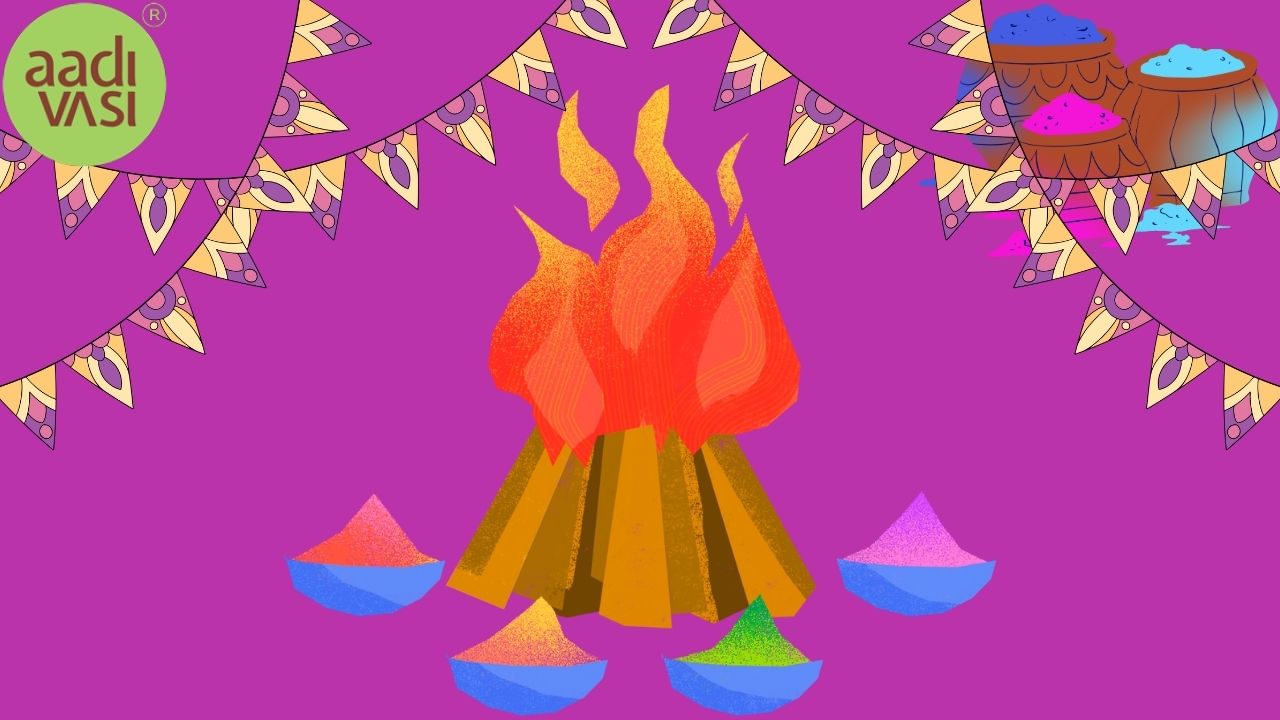Why We Celebrate Holika Dahan: The Story of Prahlad and Holika

Why We Celebrate Holika Dahan: The Story of Prahlad and Holika
Every year, just before Holi, Holika Dahan Festival: Story and Traditions lights up the skies across India. Streets buzz with excitement, pyres are built, and communities gather. But why is Holika Dahan celebrated? Why do we burn effigies and rejoice? The answers lie in an ancient tale—one that speaks of courage, faith, and the triumph of good over evil.
Interestingly, today, many organizations like aadivasi.org are breathing new life into traditional crafts. Handmade offerings, once forgotten, are making their way back into rituals, adding deeper meaning to cultural celebrations and even making their way into thoughtful corporate gifting. As Holi approaches, the conversation around safe and eco-friendly celebrations grows louder. Natural plant pigments, Khadi-certified alternatives, and natural colors from sources like aadivasi.org ensure that the festival remains vibrant while also being kind to the environment.
The Legend of Prahlad and Holika
A long time ago, there was a powerful king—Hiranyakashipu. Ruthless, ambitious, and self-obsessed, he believed he was invincible. He demanded that everyone worship him, but his own son, Prahlad, refused. The boy was devoted to Lord Vishnu, much to his father’s fury. No amount of threats or punishments could shake his faith.
So, the king hatched a plan. He called upon his sister, Holika, who had a special gift—a cloak that made her immune to fire. She was to take Prahlad into a raging fire, sit with him, and emerge unscathed, leaving the boy to perish.
But fate had other plans. As the flames rose, the divine intervened. The cloak flew off Holika and wrapped itself around Prahlad instead. She burned to ashes while he sat untouched. And so, every year, Holika Dahan and the Victory of Good Over Evil is celebrated—reminding us that arrogance and cruelty never win, while faith and righteousness always find a way.
Holika Dahan: Meaning and Mythology
The fire of Holika isn’t just about burning wood—it’s about burning negativity, doubts, and fears. The tradition of Holika Dahan Rituals and Their Importance runs deep. It is believed that taking part in this ritual cleanses the soul, paving the way for new beginnings.
And then comes Holi—the festival of colors. The night of fire gives way to a morning of joy, where people let go of old grudges, smear each other with vibrant hues, and dance to the rhythm of life. But as we celebrate, it is crucial to choose safer alternatives to chemical-laden colors. Traditional plant pigments, made from flowers and herbs, offer a toxin-free way to enjoy the festival. Supporting initiatives that promote Khadi-certified and natural colors not only ensures safety but also helps artisans and sustainable businesses flourish.
Holika Dahan: Story, Rituals, and History
As the sun sets on Holika Dahan, families gather. Pyres are lit, prayers are offered, and hopes are whispered into the night sky. The Holika Dahan Festival: Myths and Facts come alive through chants and traditions passed down for generations.
In many homes, embers from the fire are taken back—symbols of protection, tokens of faith. Some even apply the sacred ashes on their foreheads, a mark of purification and renewal.
Holika Dahan and Holi: The Connection Explained
While Holika Dahan: The Burning of Holika is about resilience, Holi is about freedom. The two festivals are deeply intertwined—one paving the way for the other.
The legend of Holika Dahan Story and Significance lives on, not just in mythology but in everyday life. It is a reminder to stand tall, even when the odds are against us.
So, when you see the fire rise this year, don’t just watch. Feel it. Absorb its message. Let go of what no longer serves you. Celebrate not just with color, but with consciousness—choosing plant pigments, Khadi-certified, and natural colors that respect both tradition and nature.
Because Holika Dahan isn’t just a festival—it’s a lesson in faith, courage, and renewal.
Happy Holika Dahan!

